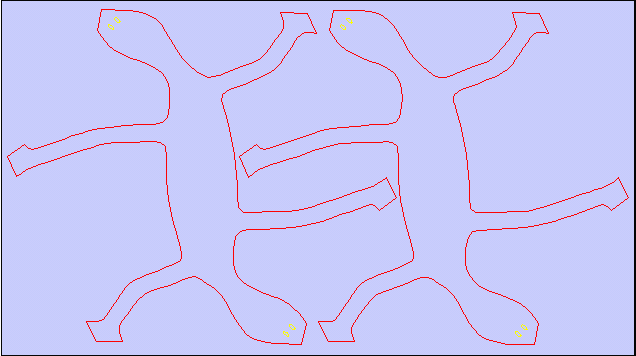Another photo of the final result and more about the structure is
available
here. Our plan for its
future is that it will hang in the new
Stata center.
If you want to make your own paper or wood model, below is an image of
how we layed out a pair of parts in the 32-by-18 inch bed of the laser
cutter we used. Even without a laser-cutter, you can print this on card
stock, cut with scissors, and assemble your own paper model.
I'd like to thank the many people at
MIT
who made this project possible. First and foremost
Erik Demaine invited
me to be
artist-in-residence
through the
Office
for the Arts and the
EECS
department. Erik Demaine,
Marty Demaine, and
Abhi Shelat spent many
hours with me doing the preparations, especially laser-cutting the wood
and paper.
Rebecca
Frankel helped with the oil finish. The
CSAIL
fabrication shop and staff provided the laser-cutter and other
resources. Erik
Demaine,
Mark
Hoffman, and
Moses
Liskov took many
photos, including the
ones above.
Tom
Buehler from the CSAIL Computer Graphics group took
video and edited it. Michele Oshima, Nicole Ackerman, and Marc Rios at
the MIT office for the Arts did advertisement and
behind-the-scenes logistic arrangements.
Tech Talk ran
a nice
article which helped draw a crowd to the event. And of course, my
thanks most
of all go to each of the barn raisers who came and participated in the
assembly.
See also:
Copyright 2003, George W. Hart
